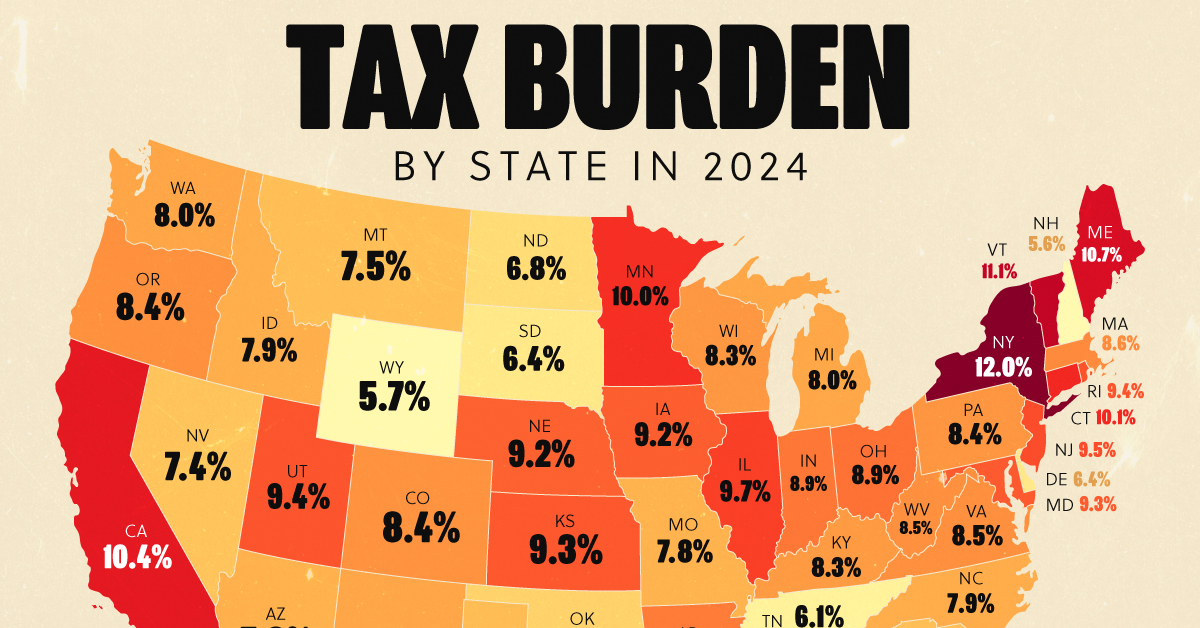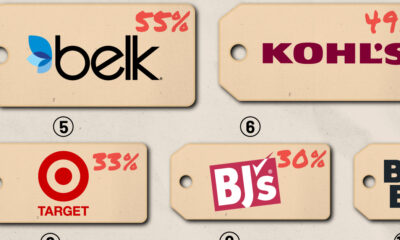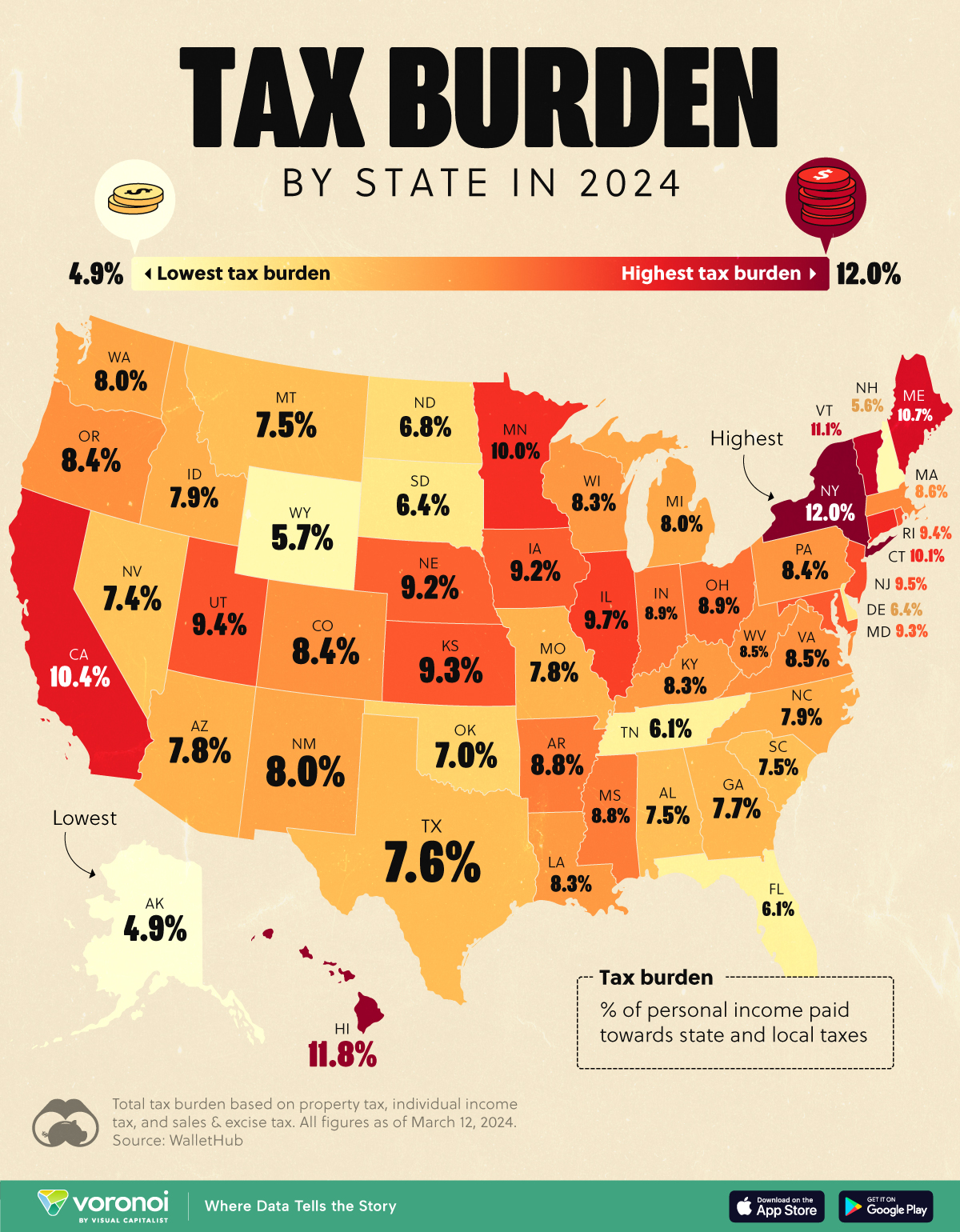Money
The Early Business Pursuits of Bezos, Buffett, and Other Legends
They say everyone has to start somewhere.
And for legends like Jeff Bezos, Warren Buffett, Estée Lauder, and Richard Branson – well, they got into the money-making game early.
From hawking golf balls to bootstrapping student magazines, many of these iconic entrepreneurs started their very first businesses in their childhood or teenage years. Not all of these enterprises fared well, but they did give these eventual magnates an early taste of the startup life.
Childhood Ambition
Today’s infographic comes to us from Colonial Life, and it showcases the early endeavors of ten successful business greats:

While some business greats weren’t afraid to get started later on, people like Warren Buffett and Jeff Bezos had an entrepreneurial drive at a very early age.
It likely drove their parents wild, but it seems that hitting the ground running ended up paying off in the long run.
Entrepreneurial Early Years
How did famous entrepreneurs get their feet wet in business? It generally falls into two categories.
1. Work With What You Have
People like Warren Buffett, Ingvar Kamprad, and Daymond John worked with what they had, finding the easiest route into business possible.
Buffett sold golf balls, built an ambitious newspaper route, and sold gum. Meanwhile, Ingvar Kamprad marked up wholesale matches to sell them to neighbors for a profit, while Daymond John personalized pencils in his school classes.
The lesson here? Sometimes the first opportunities you see are not glorious game-changers – instead, you need to apply hard work and creativity to a widely available opportunity and grind it out.
2. Early Passions Realized
On the other hand, entrepreneurs like Michael Dell, Max Levchin, Kevin Plank, and Estée Lauder realized their passions early, and these initial childhood ambitions were linked to their later careers.
Dell and Levchin were both involved in computers early – either building them or programming on them – and would both start renowned tech companies (Dell and Paypal) in their adult lives. Kevin Plank of Under Armour was in the apparel business early, selling t-shirts at local concerts, and Estée Lauder was selling cosmetics to her friends that were made by her chemist uncle.
Want other useful hints from the world’s best? Take a look at the Habits of Highly Successful Entrepreneurs.
Wealth
Visualizing the Tax Burden of Every U.S. State
Tax burden measures the percent of an individual’s income that is paid towards taxes. See where it’s the highest by state in this graphic.

Visualizing the Tax Burden of Every U.S. State
This was originally posted on our Voronoi app. Download the app for free on iOS or Android and discover incredible data-driven charts from a variety of trusted sources.
This map graphic visualizes the total tax burden in each U.S. state as of March 2024, based on figures compiled by WalletHub.
It’s important to understand that under this methodology, the tax burden measures the percent of an average person’s income that is paid towards state and local taxes. It considers property taxes, income taxes, and sales & excise tax.
Data and Methodology
The figures we used to create this graphic are listed in the table below.
| State | Total Tax Burden |
|---|---|
| New York | 12.0% |
| Hawaii | 11.8% |
| Vermont | 11.1% |
| Maine | 10.7% |
| California | 10.4% |
| Connecticut | 10.1% |
| Minnesota | 10.0% |
| Illinois | 9.7% |
| New Jersey | 9.5% |
| Rhode Island | 9.4% |
| Utah | 9.4% |
| Kansas | 9.3% |
| Maryland | 9.3% |
| Iowa | 9.2% |
| Nebraska | 9.2% |
| Ohio | 8.9% |
| Indiana | 8.9% |
| Arkansas | 8.8% |
| Mississippi | 8.8% |
| Massachusetts | 8.6% |
| Virginia | 8.5% |
| West Virginia | 8.5% |
| Oregon | 8.4% |
| Colorado | 8.4% |
| Pennsylvania | 8.4% |
| Wisconsin | 8.3% |
| Louisiana | 8.3% |
| Kentucky | 8.3% |
| Washington | 8.0% |
| New Mexico | 8.0% |
| Michigan | 8.0% |
| North Carolina | 7.9% |
| Idaho | 7.9% |
| Arizona | 7.8% |
| Missouri | 7.8% |
| Georgia | 7.7% |
| Texas | 7.6% |
| Alabama | 7.5% |
| Montana | 7.5% |
| South Carolina | 7.5% |
| Nevada | 7.4% |
| Oklahoma | 7.0% |
| North Dakota | 6.8% |
| South Dakota | 6.4% |
| Delaware | 6.4% |
| Tennessee | 6.1% |
| Florida | 6.1% |
| Wyoming | 5.7% |
| New Hampshire | 5.6% |
| Alaska | 4.9% |
From this data we can see that New York has the highest total tax burden. Residents in this state will pay, on average, 12% of their income to state and local governments.
Breaking this down into its three components, the average New Yorker pays 4.6% of their income on income taxes, 4.4% on property taxes, and 3% in sales & excise taxes.
At the other end of the spectrum, Alaska has the lowest tax burden of any state, equaling 4.9% of income. This is partly due to the fact that Alaskans do not pay state income tax.
Hate Paying Taxes?
In addition to Alaska, there are several other U.S. states that don’t charge income taxes. These are: Florida, Nevada, South Dakota, Tennessee, Texas, Washington, and Wyoming.
It’s also worth noting that New Hampshire does not have a regular income tax, but does charge a flat 4% on interest and dividend income according to the Tax Foundation.
Learn More About Taxation From Visual Capitalist
If you enjoyed this post, be sure to check out this graphic which ranks the countries with the lowest corporate tax rates, from 1980 to today.
-

 Brands5 days ago
Brands5 days agoThe Evolution of U.S. Beer Logos
-

 Culture2 weeks ago
Culture2 weeks agoThe World’s Top Media Franchises by All-Time Revenue
-

 voronoi2 weeks ago
voronoi2 weeks agoBest Visualizations of April on the Voronoi App
-

 Wealth2 weeks ago
Wealth2 weeks agoCharted: Which Country Has the Most Billionaires in 2024?
-

 Business1 week ago
Business1 week agoThe Top Private Equity Firms by Country
-

 Markets1 week ago
Markets1 week agoThe Best U.S. Companies to Work for According to LinkedIn
-

 Economy1 week ago
Economy1 week agoRanked: The Top 20 Countries in Debt to China
-

 Politics1 week ago
Politics1 week agoCharted: Trust in Government Institutions by G7 Countries















